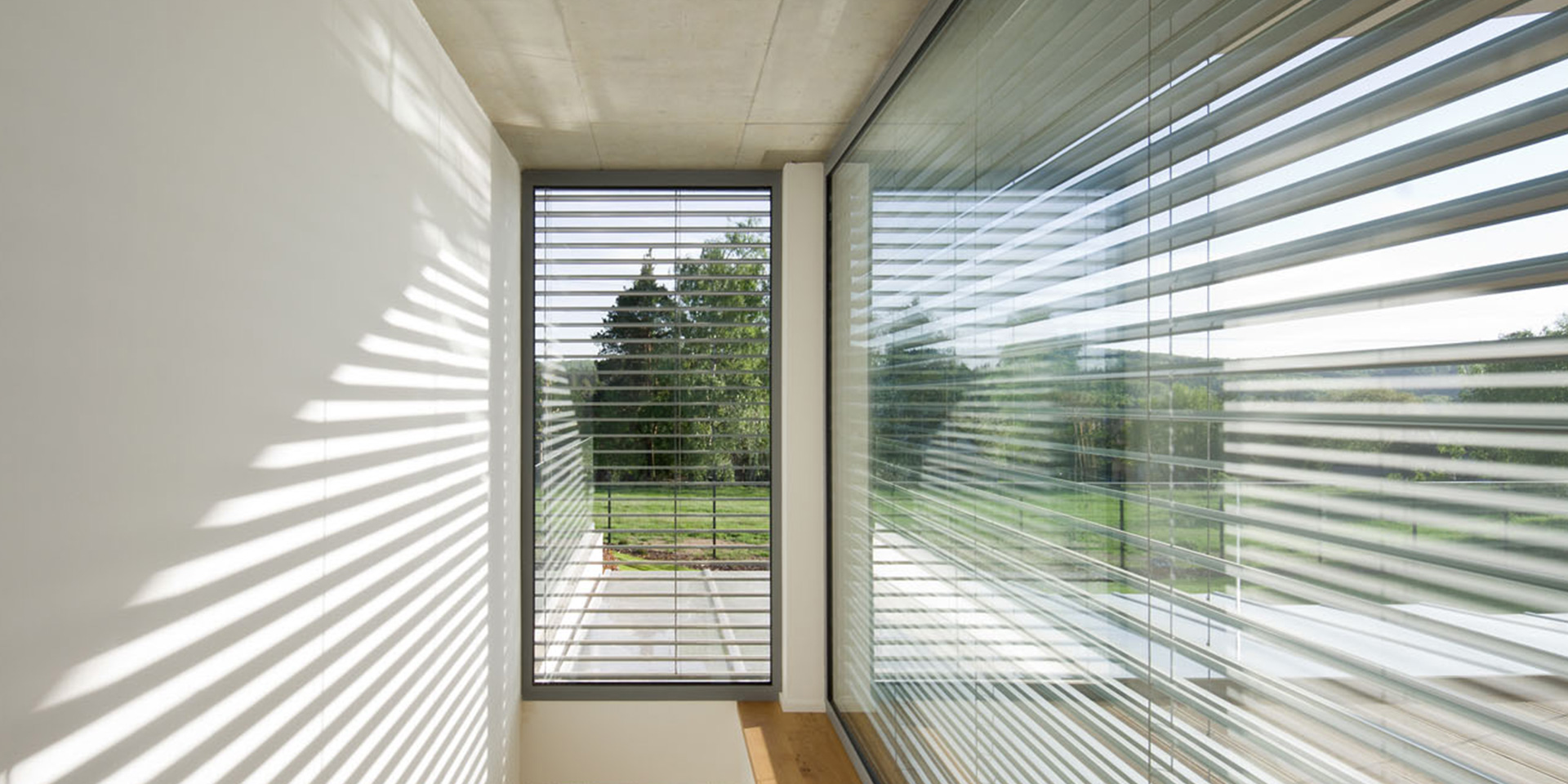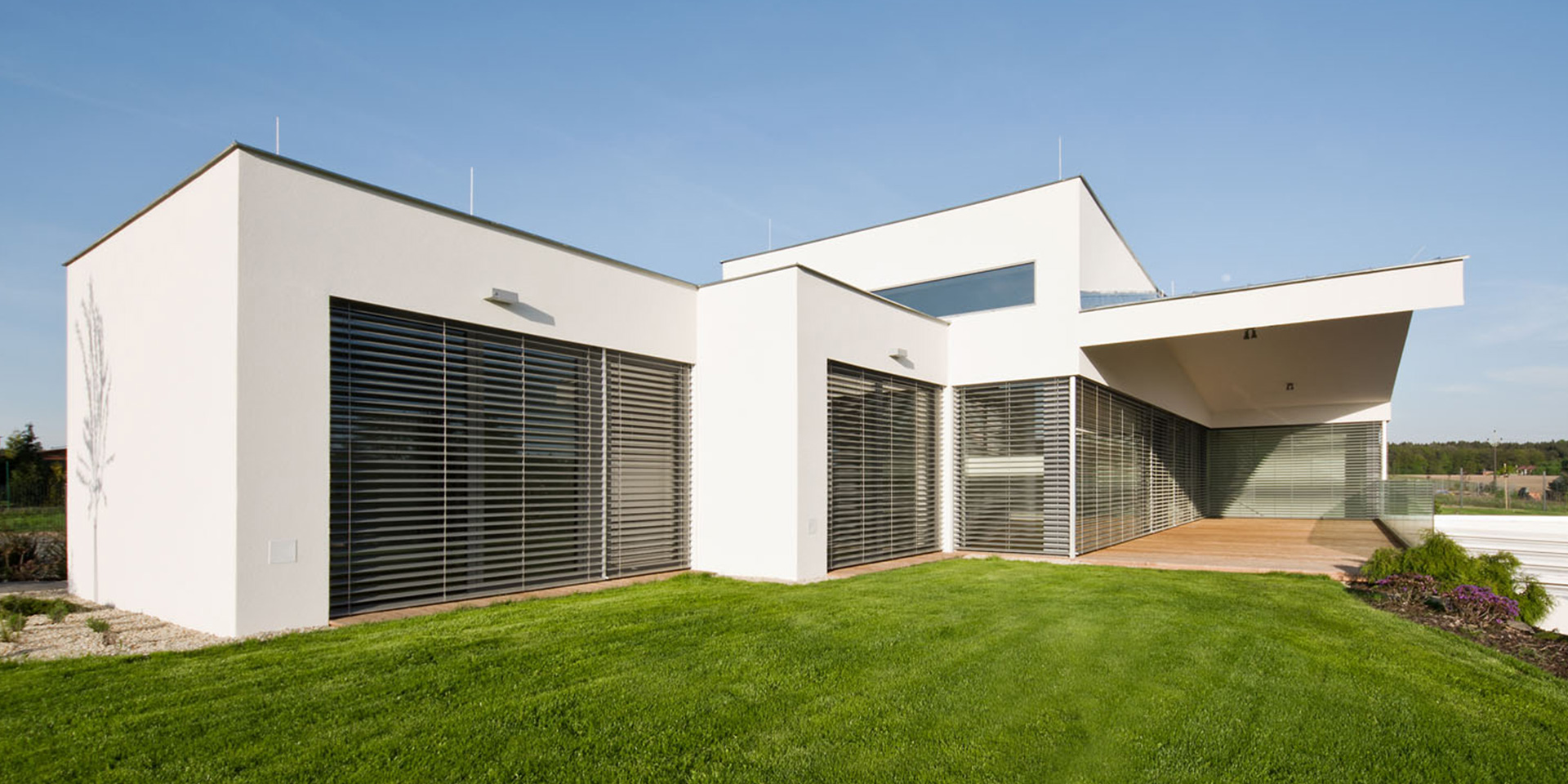Complete instructions: how to select external blinds
When purchasing external blinds, you need to choose the desired shape, width, slat colour, control method and installation method. We have summed it all up in this article to help you make the best and most qualified decision for your purchase.
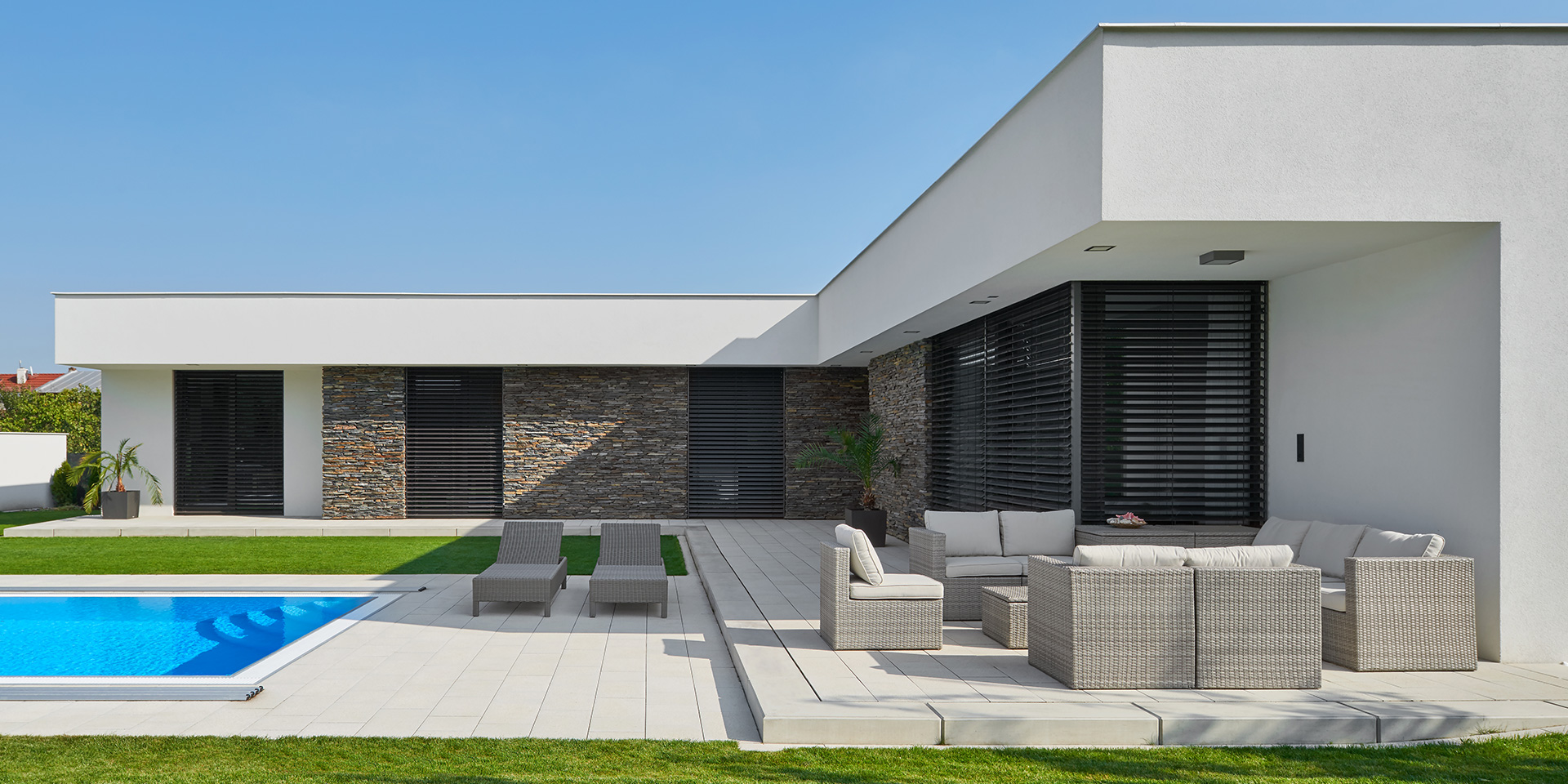
The first step is to select the type of blinds. Manufacturers often use an upper-case letter and a number (such as Z90) as a type designation, which designates the type and shape of slats used (Z), followed by their width in mm (90 mm in this case).
1. Selection of slat type and width
External blinds are typically of the C, Z or S type; some marked F can be encountered occasionally. There are several general rules for them.
Blinds with C-shaped slats (such as C80 or C65) were among the first to the market. They are very affordable and their great advantage is the ability to tilt their slats both ways and reflect the light towards the ceiling or floor – whatever is more pleasing for you. However, C-shaped slats aren’t lockable, which means they do not create such darkness comparable to Z or S blinds when closed. These properties make them suitable for rooms in which less shading is sufficient.
Blinds with Z or S-shaped slats (such as S90, Z90 or Z70) are more modern. Thanks to their shape, the slats fit into each other perfectly, creating greater darkness than C-type blinds. They also have pieces of rubber pressed onto their edges so they are pleasantly quiet even when it’s windy outside.
While F-type blinds (such as F80) are not as prevalent in manufacturers’ assortments, they boast several advantages. The most significant one is a very low packet profile – the slats are flatter, meaning the blind does not take up as much space when pulled up. This comes in handy on smaller windows, where it’s important for the packet not to reduce the effective window height too much. The slats can also be tilted both ways.
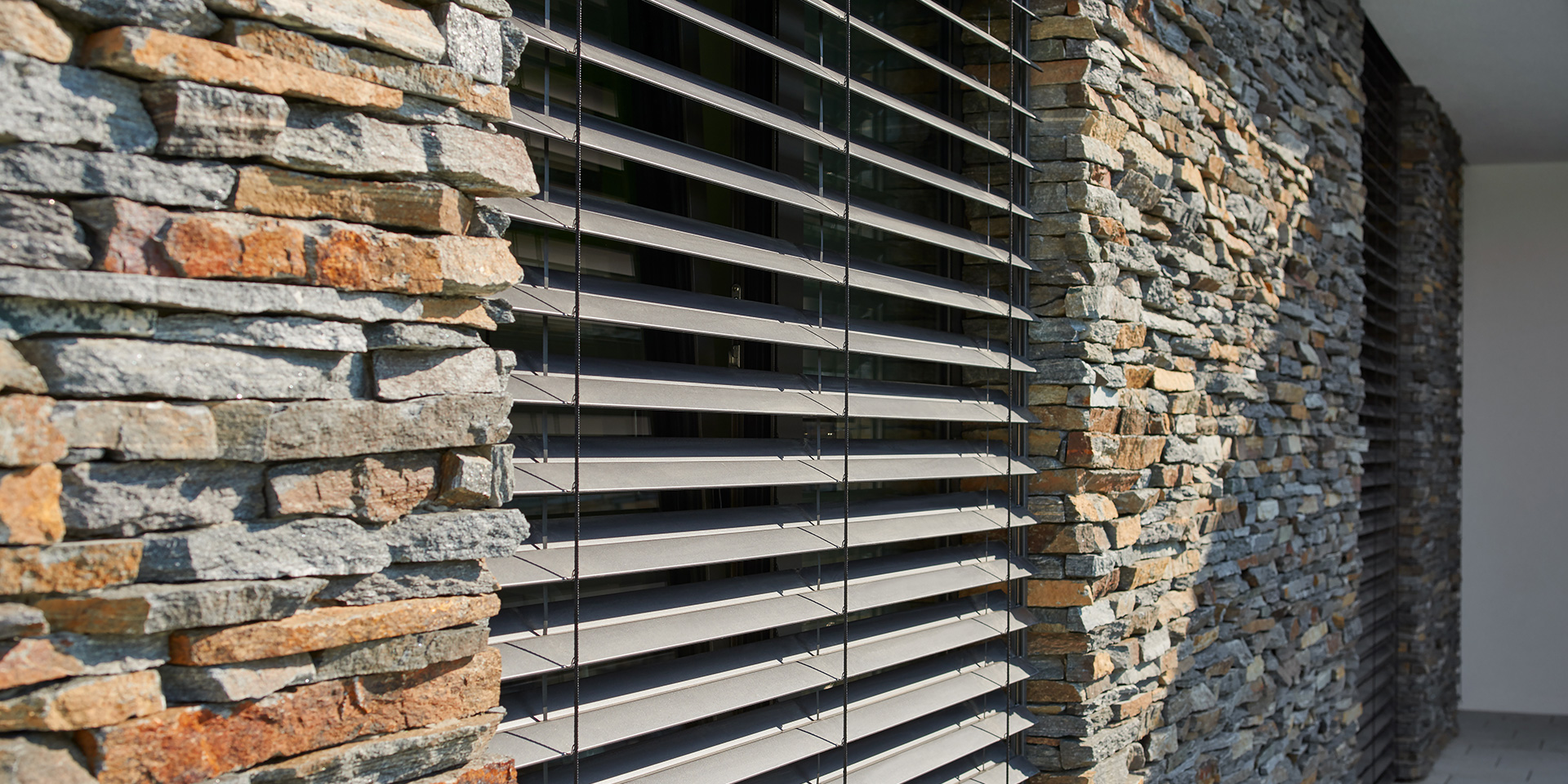
Z90 blinds in detail
Once the slat type has been selected, it is necessary to select the width. Narrower slats (e.g. 65 or 70 mm) are recommended for protection of smaller windows or windows with not as much brickwork as they don’t take up as much space and can be installed even in places where wider slats would reach over the façade. Narrow slats are more subtle and elegant, which is why an architect may suggest them when designing a house.
In contrast, wider slats (80 or 90 mm) are suitable for sun protection of large windows and glass surfaces, such as conservatories. Wider slats are typically more robust and stronger.
If you’re still not sure which type to choose, you might get inspired by other customers. Most clients tend to choose wider slats. As mentioned in our earlier article, Z90 are the best-selling blinds in our assortment.
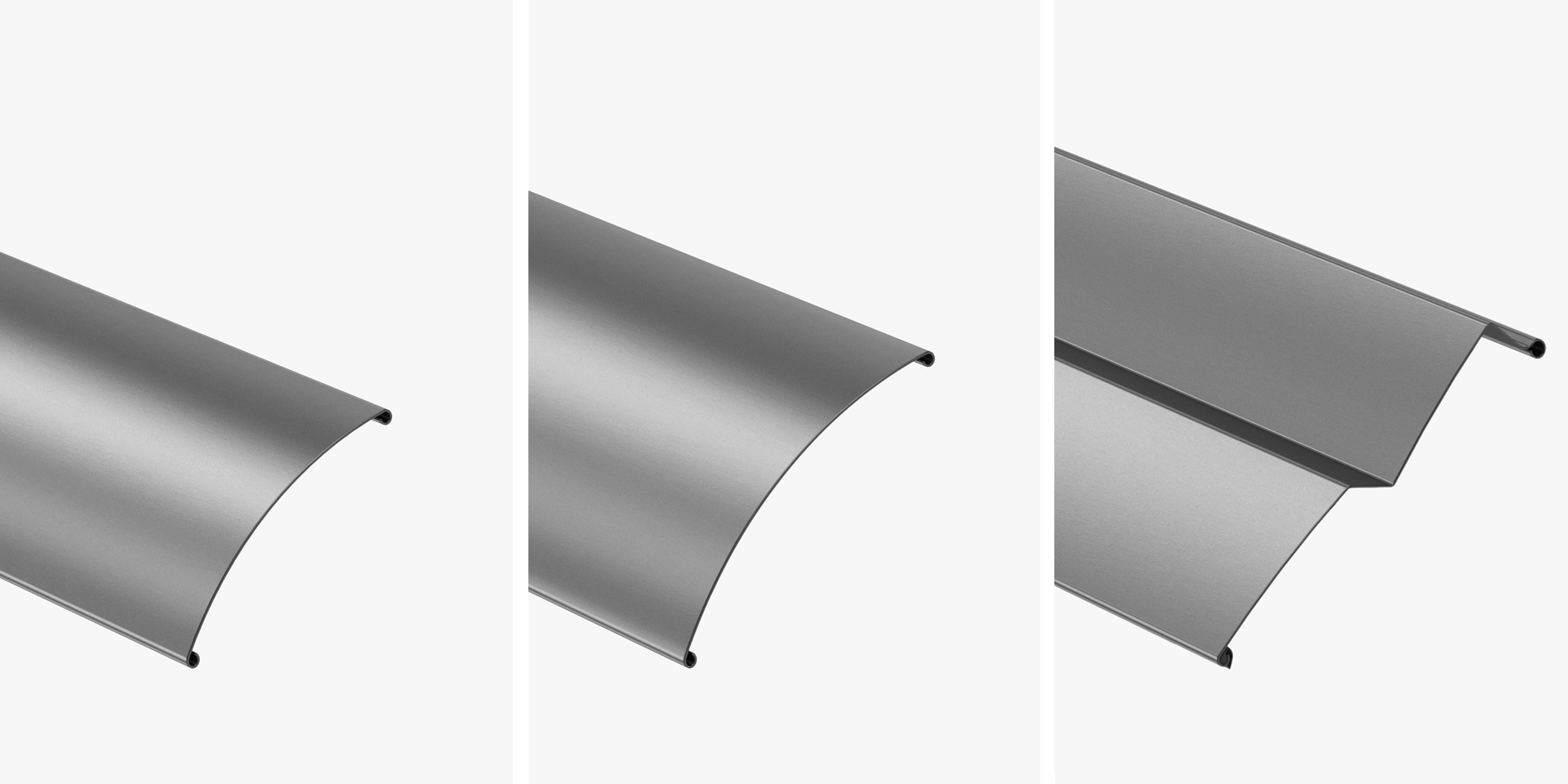
Slat width differences. The narrowest C65 on the left, C80 in the middle, the widest Z90 on the right.
2. Colour selection
After selecting the blind type, it is time to select a colour. Exterior blinds are usually available in several basic colours, most often some cooler tones of white, grey or anthracite. If the basic selection does not attract you, some manufacturers offer the option to select additional colours beyond the standard ones.
For example, we at NEVA offer most products in 22 basic colours. Based on the customer’s requests, we can get slat material in any RAL or IGP-friendly colour from our Swiss supplier. You yourself can select the structure of the slat surface, either smooth or structured paint.
Keep in mind that blind colour selection does not involve just the colour of the slats, but also the guiding profiles, guard plates and lower profiles.
If you need some inspiration, the most popular colours for external blinds are as follows:
- Silver
- Dark grey
- Silver-grey
- Bronze
- White
3. Control method selection
There are three basic options to select from.
The oldest and cheapest is manual control, which utilizes either cranks or cords to raise/drop and tilt the slats. In addition to certain discomfort, there is a disadvantage in that the installers need to drill through the wall or window in order to put the controlling crank or cord on the inside.
A button on the interior wall or remote control is a more advanced method. The upper profile above the packet houses a motor that drives the blind. Motors are available in basic variants or can have some premium functionalities such as obstacle detection or protection from freezing.
The tilting, raising and dropping of the blinds is achieved by simply pressing buttons on the panel or remote control. You have the option to connect the controls to multiple sets of blinds at the same time and actuate all of them within the house.
Home automation, also known as Smart Home, is the most advanced method. Smart Home allows you to control the blinds as well as lights, shutters, your pool or garage door. The blinds are once again fitted with electric motors, which are connected to the home control unit accessible via your smart phone, tablet or computer. The blinds can in turn be controlled from those devices or via pre-set scenarios.
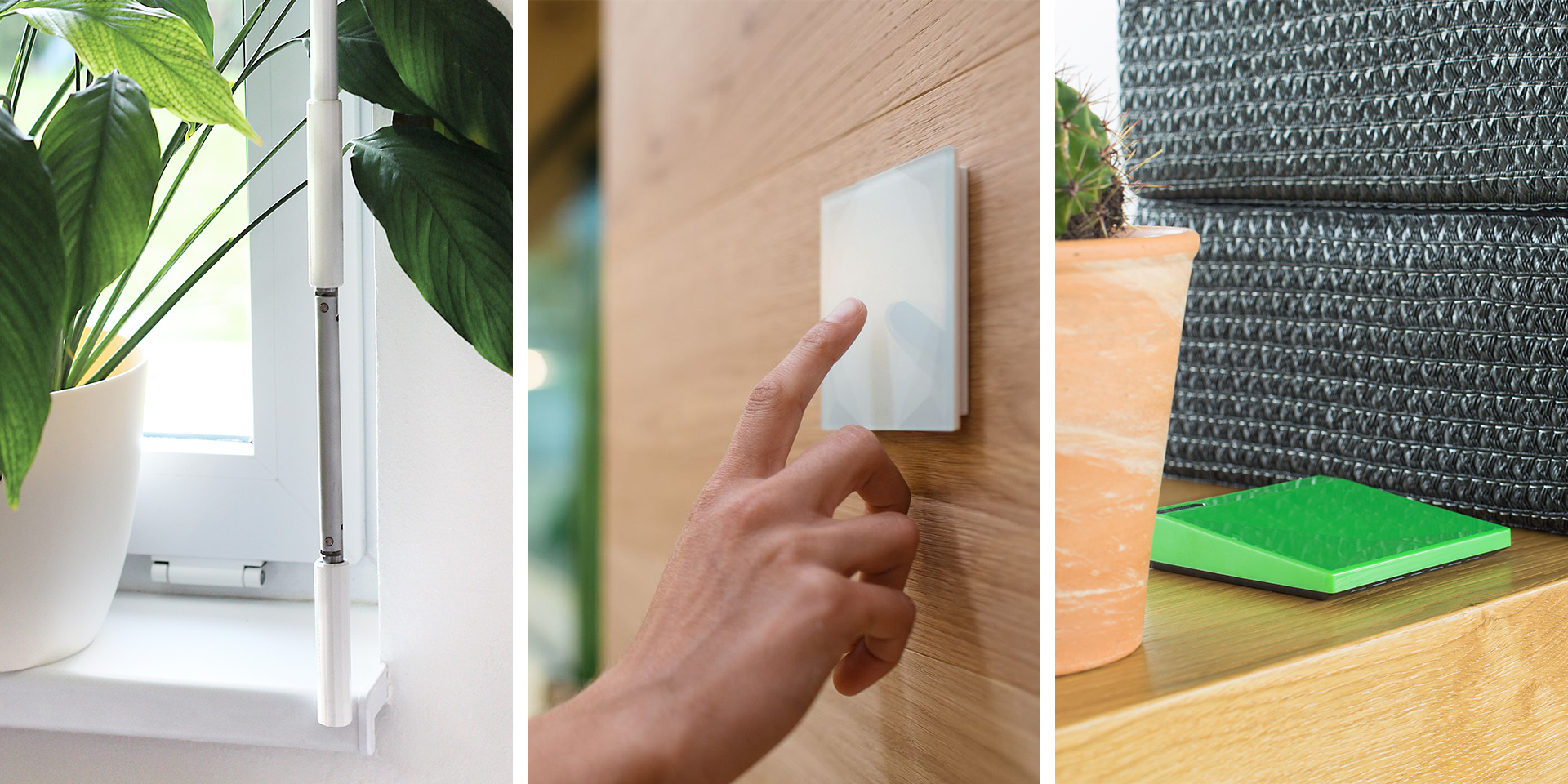
Control types for external blinds – left to right: cranks, wall-mounted button and the Miniserver Go smart home system made by Loxone
4. Installation options
While there is a plethora of installation methods for external blinds, your choice is limited by the properties of your building. The following text describes the most common method.
Blinds concealed underneath the façade are very popular, with the upper profile, anchoring and guiding profiles hidden. The disadvantage of this installation method is that it needs to be taken into account during the design, as the blinds cannot simply be added afterwards without significantly compromising the façade. At NEVA, we offer our own solution for installation underneath the façade – the ISO-KASTL sub-plaster casing.
When purchasing blinds for a house that has already been built or where they simply cannot fit underneath the façade, you can opt for an installation underneath a guard plate. In this case, a painted guard plate is fitted above the window and used to house the blinds when they are pulled up during wind or rain.
The third variant involves installation directly onto the façade, with all of the anchoring elements fitted on the front side and the blinds “in front” of the window area. At NEVA, we offer façade systems in a square variant: an angular guard plate and guide rails.
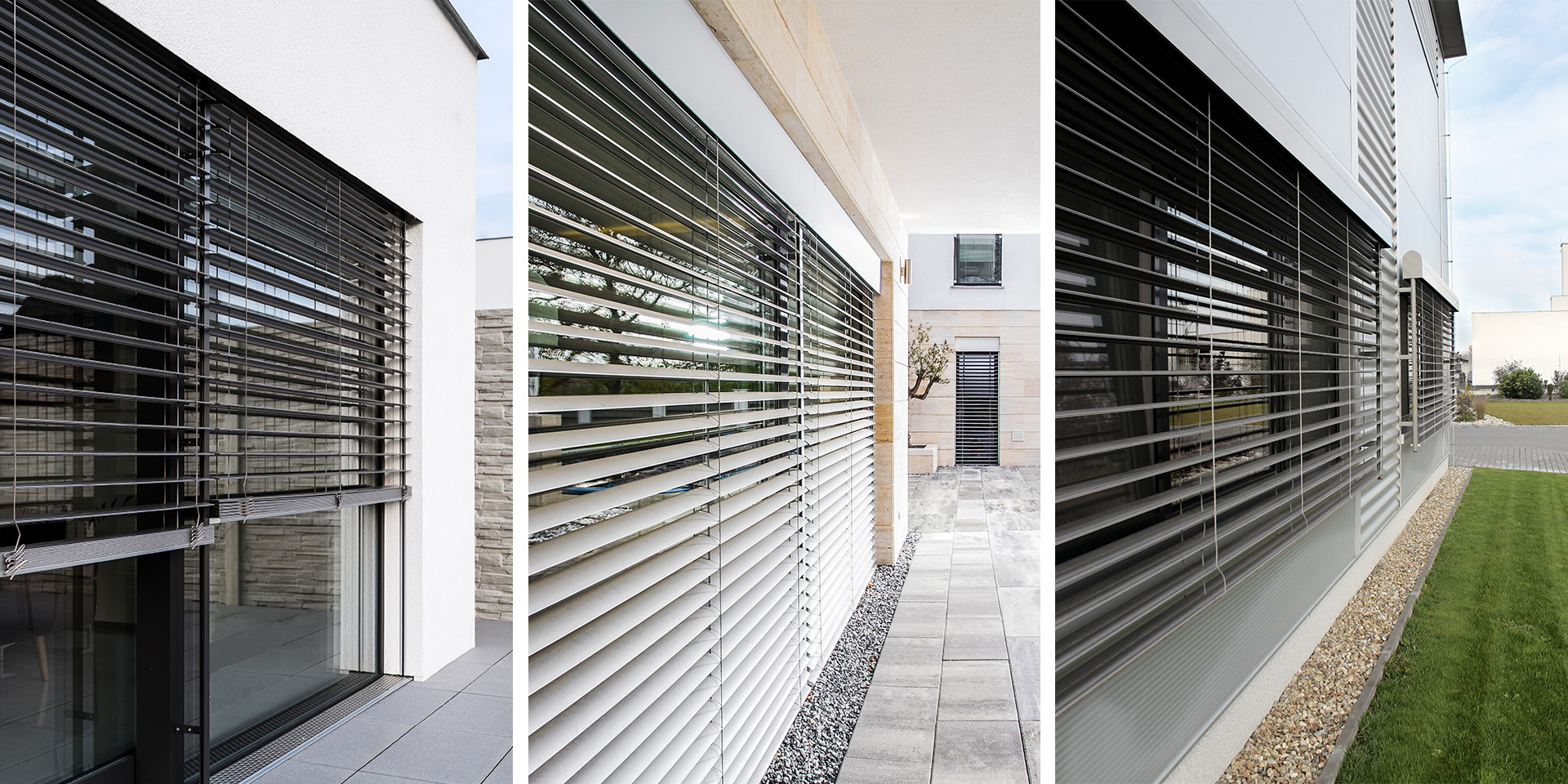
Installation methods for external blinds – from left to right: underneath the façade, under a guard plate, on top of the façade.

